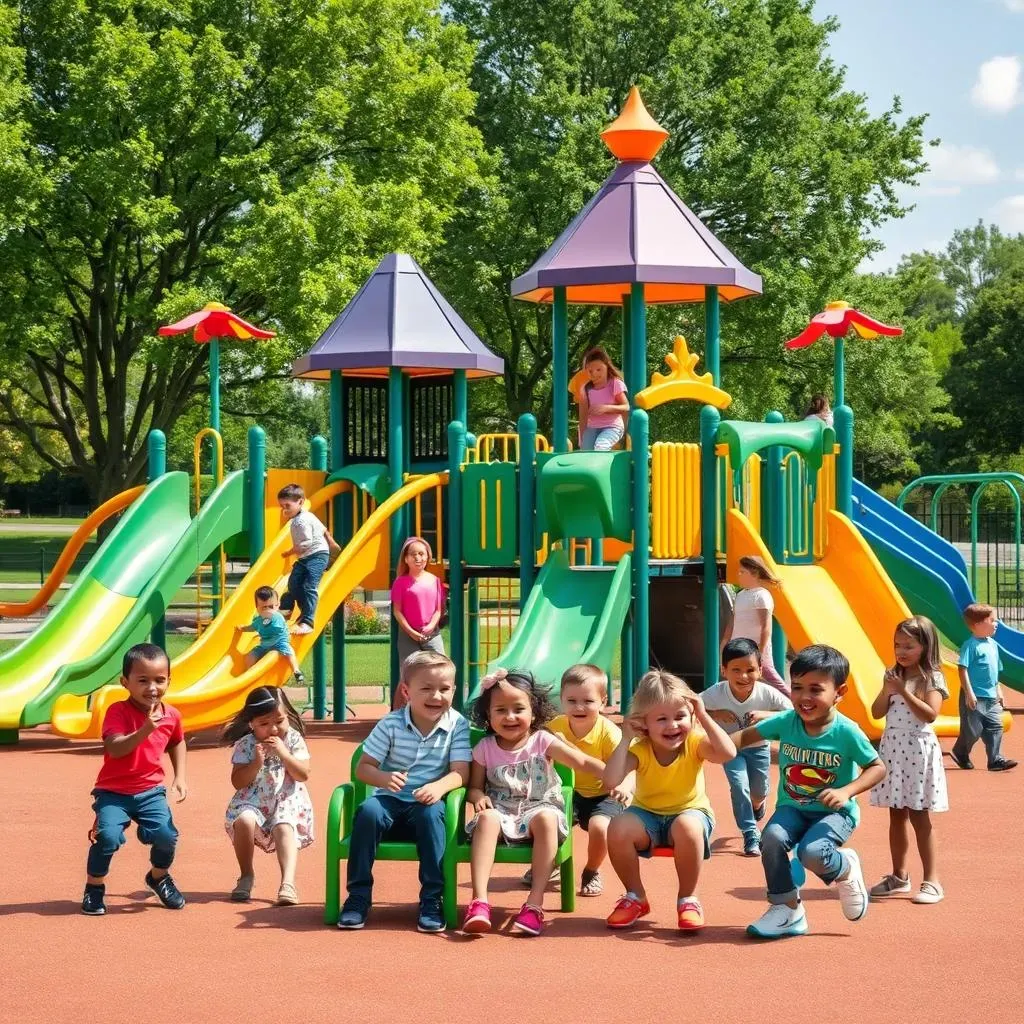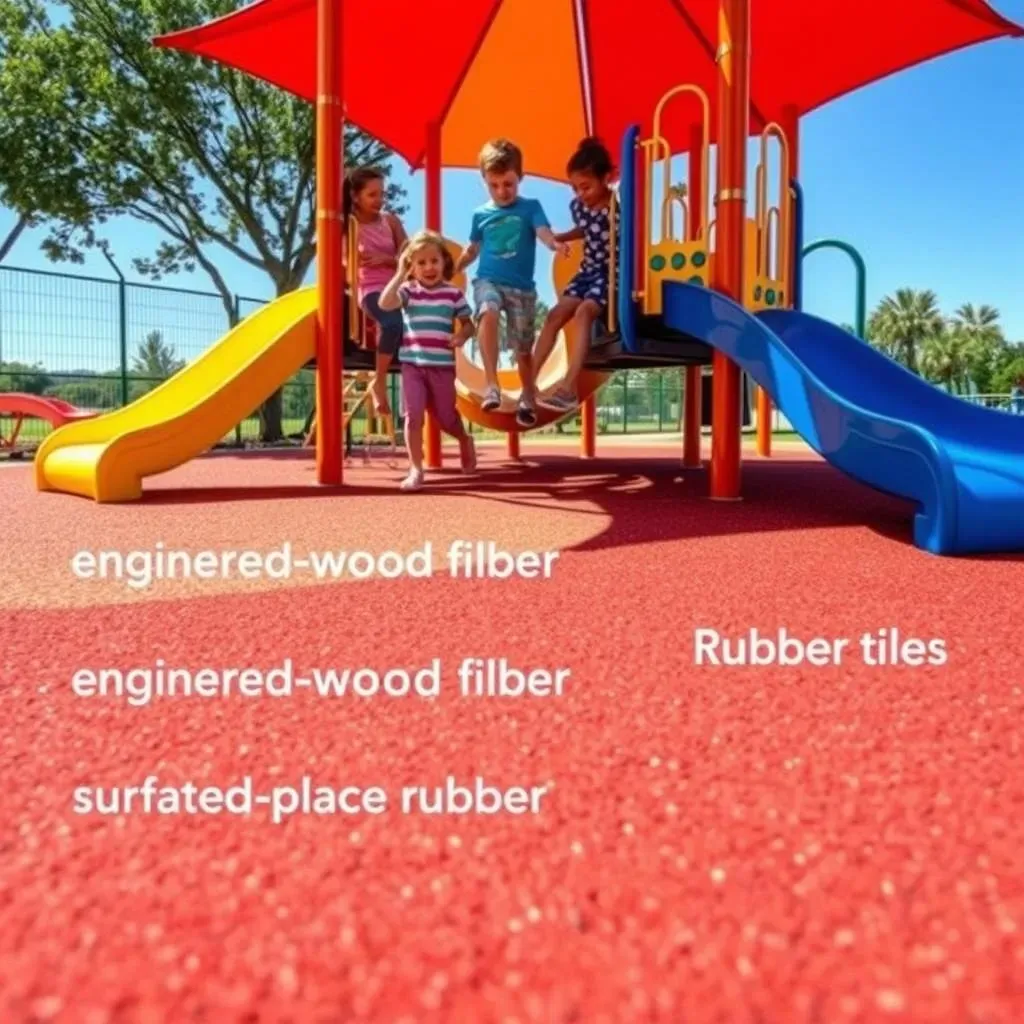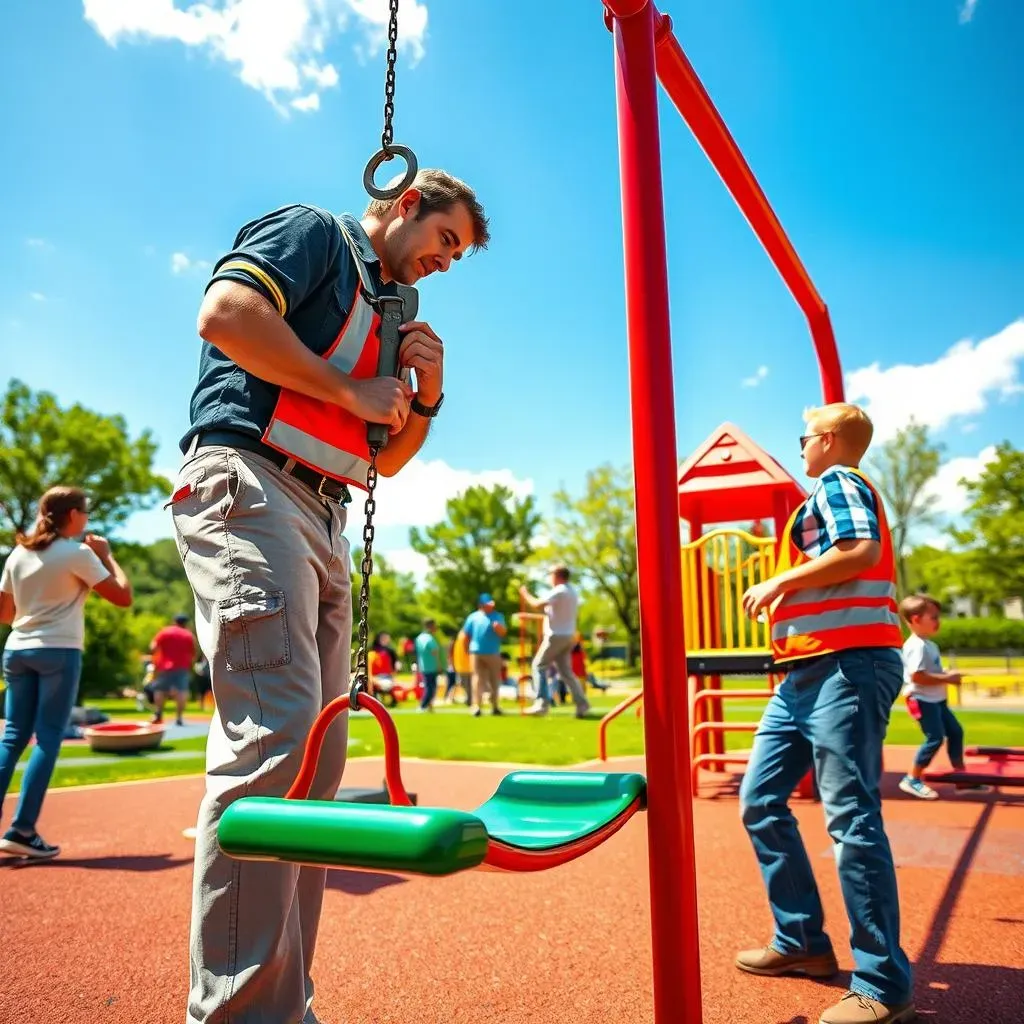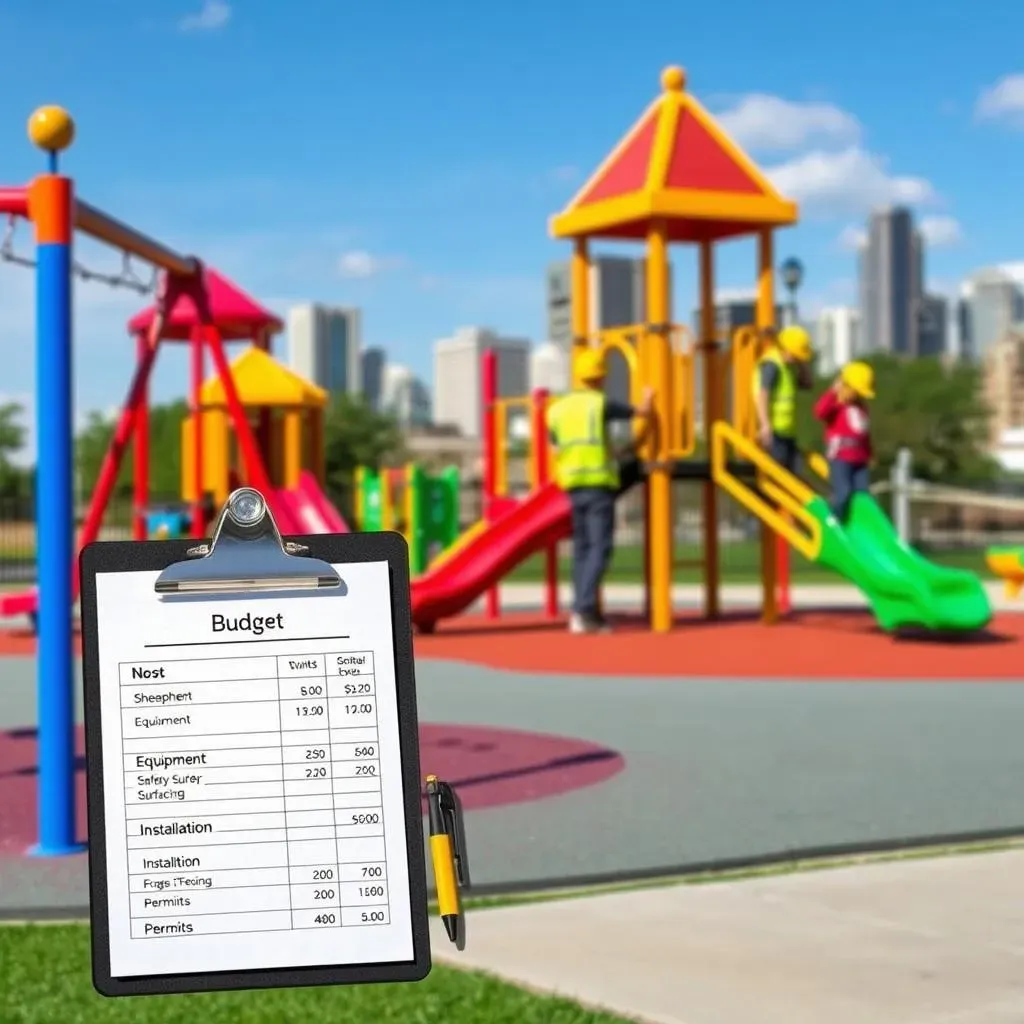Table of Contents
Ready to transform your outdoor space into a hub of laughter and adventure? We're diving deep into the world of large outdoor playground equipment, exploring everything from swing sets and slides to climbing structures and inclusive play options. Whether you're designing a playground for a school, park, or your own backyard, this guide is your ultimate resource. We'll walk you through selecting the perfect equipment to fit your space and budget, ensuring a safe and engaging environment for kids of all ages and abilities. Discover the importance of proper safety surfacing, learn essential maintenance tips to keep your playground in top condition for years to come, and get inspired by creative design ideas that will make your playground the envy of the neighborhood. Plus, we'll tackle the nitty-gritty details of budgeting and installation, so you can bring your playground dreams to life without breaking the bank. Get ready to unleash the fun!
Choosing the Right Large Outdoor Playground Equipment for Your Space

Choosing the Right Large Outdoor Playground Equipment for Your Space
so you're ready to pick out some awesome large outdoor playground equipment? That's fantastic! But hold up, before you start adding everything to your cart, let's think strategically. First, size matters. Seriously, measure your space! You don't want a swing set that's practically in your neighbor's yard. Think about how many kids you want to accommodate, too. A small playset might be perfect for a family, but a school or park needs something much bigger and more durable. Also, consider the age range. Toddlers and older kids have different needs and abilities, so choose equipment that's age-appropriate and challenging for everyone. And of course, budget! Figure out how much you can realistically spend before you fall in love with a $50,000 mega-structure.
Now, let's get into the fun stuff! Think about the types of activities you want to offer. Swings are classic, but what about slides, climbing walls, or even a zipline? Consider incorporating different elements to keep kids engaged and active. For example, a climbing structure can help develop strength and coordination, while a slide provides a thrilling ride. Don't forget about inclusive play options, either. Adding ramps, accessible swings, and sensory play areas ensures that kids of all abilities can join in the fun. It's all about creating a space where everyone feels welcome and can play together.
Safety Surfacing Options for Large Outdoor Playgrounds

Safety Surfacing Options for Large Outdoor Playgrounds
so you've got the large outdoor playground equipment picked out, but what's underneath it? That's where safety surfacing options for large outdoor playgrounds come in! This isn't just about aesthetics; it's about protecting kids from serious injuries. Think about it: falls happen, and the right surfacing can make a huge difference. We're talking about everything from engineered wood fiber (EWF) to poured-in-place rubber, rubber tiles, and even good old-fashioned sand or pea gravel. Each has its pros and cons, so let's break it down.
First up, EWF. It's affordable, accessible, and when installed correctly, it provides excellent shock absorption. But, it requires regular maintenance to keep it compliant and accessible. Poured-in-place rubber is a fantastic option for accessibility and safety, as it creates a smooth, seamless surface. However, it's one of the most expensive options. Rubber tiles offer a good balance of safety and cost, plus they're easy to install and replace. Finally, sand and pea gravel are budget-friendly, but require frequent raking and aren't the best for accessibility. Ultimately, the best choice depends on your budget, the specific needs of your playground, and the level of maintenance you're willing to commit to.
Now, let's talk about critical fall height. This is the maximum height from which a child can fall onto the surface without sustaining a life-threatening head injury. The type and depth of your safety surfacing must meet or exceed the critical fall height of your tallest piece of equipment. It's crucial to check the manufacturer's specifications and follow industry standards (like those from the Consumer Product Safety Commission) to ensure you're providing adequate protection. Don't skimp on this – it's the most important aspect of playground safety!
- Engineered Wood Fiber (EWF): Affordable, good shock absorption, requires maintenance.
- Poured-in-Place Rubber: Seamless, accessible, high cost.
- Rubber Tiles: Good balance of safety and cost, easy to install.
- Sand/Pea Gravel: Budget-friendly, requires frequent raking, not ideal for accessibility.
Essential Maintenance Tips for LongLasting Large Outdoor Playground Equipment

Essential Maintenance Tips for LongLasting Large Outdoor Playground Equipment
Regular Inspections: Your First Line of Defense
so you've invested in awesome large outdoor playground equipment. Now, how do you keep it safe and fun for years to come? The answer is simple: regular inspections! Think of it like taking your car in for a tune-up. You want to catch small problems before they become big, expensive headaches. At least twice a month, walk around your playground and give everything a good once-over. Look for loose bolts, cracked plastic, rusted metal, and any signs of wear and tear. Pay special attention to high-use areas like swings, slides, and climbing structures. Are the swing chains frayed? Is the slide surface smooth and free of cracks? Are the climbing holds secure?
Don't just look – touch and test! Wiggle the swing seats, push on the slide, and try to move the climbing holds. If anything feels loose or unstable, address it immediately. Keep a detailed log of your inspections, noting any issues you find and the actions you take to resolve them. This will not only help you stay on top of maintenance but also provide valuable documentation in case of an accident. Remember, a little bit of preventative maintenance can go a long way in extending the life of your playground equipment and keeping kids safe.
Cleaning and Sanitation: Keeping it Germ-Free
Let's face it: playgrounds can get pretty grimy. Kids are kids, and they're not always the cleanest creatures. Plus, outdoor equipment is exposed to the elements, which can lead to dirt, mold, and other nasty stuff. Regular cleaning and sanitation are essential for maintaining a healthy play environment. How often should you clean? At least once a week, give your playground a good scrubbing. Use a mild soap and water solution to wipe down surfaces, paying special attention to areas that kids touch frequently, such as handrails, swing seats, and slide surfaces. For tougher stains or mildew, you can use a diluted bleach solution (but be sure to rinse thoroughly afterwards).
Consider investing in a pressure washer for a deeper clean, but be careful not to use too much pressure, as this can damage certain materials. In addition to regular cleaning, it's also a good idea to sanitize your playground, especially during cold and flu season. Use a commercially available disinfectant spray or wipe to kill germs and bacteria. Encourage kids to wash their hands frequently, and consider providing hand sanitizing stations near the playground entrance. A clean playground is a happy playground!
Maintenance Task | Frequency | Tools/Materials |
|---|---|---|
Inspect for loose bolts, cracks, rust | Twice a month | Wrench, screwdriver, inspection log |
Clean surfaces with soap and water | Weekly | Soap, water, scrub brush, hose |
Sanitize high-touch areas | Weekly (more often during flu season) | Disinfectant spray/wipes |
Check safety surfacing depth | Monthly | Measuring tape |
Repairing and Replacing Worn Parts: Don't Delay!
No matter how well you maintain your large outdoor playground equipment, parts will eventually wear out and need to be repaired or replaced. The key is to address these issues promptly to prevent further damage and ensure continued safety. Keep a stock of common replacement parts on hand, such as swing chains, bolts, and plastic caps. When you notice a worn or damaged part, don't put off the repair. The longer you wait, the more likely it is that the problem will worsen or lead to an accident.
For minor repairs, you may be able to handle them yourself with basic tools and skills. However, for more complex repairs or replacements, it's best to call in a professional. A certified playground safety inspector can assess the damage, recommend the appropriate repairs, and ensure that the work is done correctly and safely. Remember, your goal is to keep your playground in top condition so that kids can enjoy it for years to come. Staying on top of repairs and replacements is essential for achieving that goal.
Inspiring Design Ideas for Large Outdoor Play Spaces

Inspiring Design Ideas for Large Outdoor Play Spaces
Embrace Natural Elements
Forget the boring, cookie-cutter playgrounds! Let's talk about bringing nature into your play space. Think about incorporating natural elements like trees, rocks, and water features into your design. A small stream or pond can provide endless opportunities for sensory exploration, while trees offer shade and a sense of tranquility. Boulders of different sizes can become climbing challenges or cozy seating areas. You could even create a "mud kitchen" where kids can get their hands dirty and explore the wonders of nature. It's all about creating a space that feels organic, inviting, and connected to the natural world. Also, consider using natural materials like wood, bamboo, and stone in your playground structures. Not only are these materials aesthetically pleasing, but they're also more sustainable and environmentally friendly than traditional plastic or metal.
I remember visiting a playground in Denmark that was built entirely around a giant oak tree. Kids were climbing on its branches, swinging from its roots, and building forts in its shade. It was magical! It reminded me that the best playgrounds are often the ones that work in harmony with nature, rather than trying to dominate it.
Create Themed Zones for Imaginative Play
Why settle for a single, generic play area when you can create multiple themed zones that spark kids' imaginations? Think about dividing your playground into different areas, each with its own unique focus and character. You could have a "construction zone" with oversized building blocks and digging equipment, a "nature zone" with plants, insects, and bird feeders, or a "performance zone" with a stage, costumes, and musical instruments. Or, you could create a fantasy-themed area with a castle, a pirate ship, or a fairy garden. The possibilities are endless! The key is to choose themes that are engaging, age-appropriate, and that encourage kids to explore, create, and role-play. Themed zones are a great way to keep kids entertained and stimulated for hours on end.
When designing your themed zones, think about how you can incorporate different types of play. For example, a construction zone could include both active play elements (like climbing structures) and imaginative play elements (like building blocks). A nature zone could include sensory play elements (like a sand pit) and educational elements (like a butterfly garden). By combining different types of play, you can create a playground that caters to a wide range of interests and abilities.
Themed Zone | Description | Play Elements |
|---|---|---|
Construction Zone | Area for building and creating | Oversized blocks, digging equipment, toy trucks |
Nature Zone | Area for exploring the natural world | Plants, insects, bird feeders, sensory garden |
Performance Zone | Area for performing and expressing creativity | Stage, costumes, musical instruments |
Incorporate Sensory Play Elements
Don't forget about the importance of sensory play! Sensory play is any activity that stimulates a child's senses – sight, sound, touch, taste, and smell. It's crucial for cognitive development, emotional regulation, and social interaction. When designing your large outdoor playground equipment, think about how you can incorporate sensory elements that appeal to all five senses. A sand and water table is a classic choice, providing opportunities for tactile exploration and experimentation. A musical fence or xylophone can add auditory stimulation, while a brightly colored mural or sculpture can engage the sense of sight. You could even create a sensory garden with fragrant herbs, textured plants, and edible flowers. Remember, sensory play is not just for young children – kids of all ages can benefit from it!
One of my favorite sensory play ideas is to create a "barefoot path" with different textures like sand, gravel, wood chips, and smooth stones. Kids can take off their shoes and experience the different sensations under their feet. It's a fun and engaging way to connect with the earth and stimulate their sense of touch. A sensory-rich playground is a playground that truly comes alive!
Budgeting and Installation Considerations for Large Outdoor Playground Equipment

Budgeting and Installation Considerations for Large Outdoor Playground Equipment
Alright, so you're dreaming of this epic playground, but let's get real about the dollars and cents. Budgeting and installation considerations for large outdoor playground equipment are crucial. This isn't just about the initial cost of the equipment; you've got to factor in safety surfacing, delivery, installation, and ongoing maintenance. Start by getting quotes from multiple vendors. Don't be afraid to negotiate! Many suppliers offer discounts or financing options, especially for schools or non-profit organizations. Also, consider the lifespan of the equipment. Investing in higher-quality, durable materials might cost more upfront, but it can save you money in the long run by reducing the need for frequent repairs or replacements. Think of it as an investment, not just an expense!
Now, let's talk installation. Unless you're a seasoned DIYer with a team of volunteers, professional installation is almost always the way to go. It ensures that the equipment is installed correctly and safely, and it can also save you time and headaches. Get multiple installation quotes and check references. Ask about their experience installing similar equipment and their knowledge of safety standards. Don't forget to factor in site preparation costs, such as leveling the ground or removing existing structures. And finally, be sure to obtain any necessary permits or approvals from your local municipality before starting the installation process. A little bit of planning can prevent a whole lot of problems down the road!
Cost Category | Description | Estimated Cost |
|---|---|---|
Equipment | Cost of the playground structures | $5,000 - $50,000+ |
Safety Surfacing | Cost of materials like EWF, rubber, or sand | $2,000 - $20,000+ |
Delivery & Installation | Cost of transporting and installing the equipment | $1,000 - $10,000+ |
Site Preparation | Cost of leveling, clearing, or removing structures | $500 - $5,000+ |
Permits & Approvals | Fees for obtaining necessary permits | $100 - $1,000+ |
Conclusion: Creating Lasting Memories with Large Outdoor Playground Equipment
Investing in large outdoor playground equipment is more than just buying swings and slides; it's about creating a space where children can develop physically, socially, and emotionally. By carefully considering your space, budget, and the needs of your community, you can design a playground that fosters creativity, encourages active play, and provides countless hours of fun. Remember to prioritize safety, maintenance, and inclusivity to ensure that your playground remains a vibrant and welcoming space for years to come. So, go ahead, take the plunge, and build a playground where memories are made, friendships are forged, and imaginations take flight.